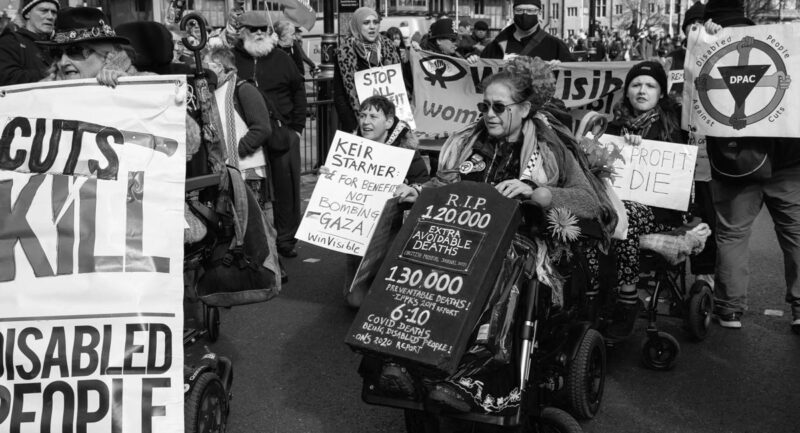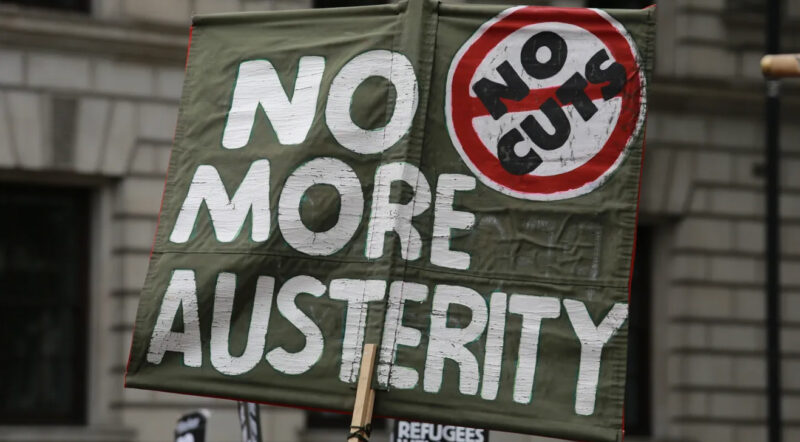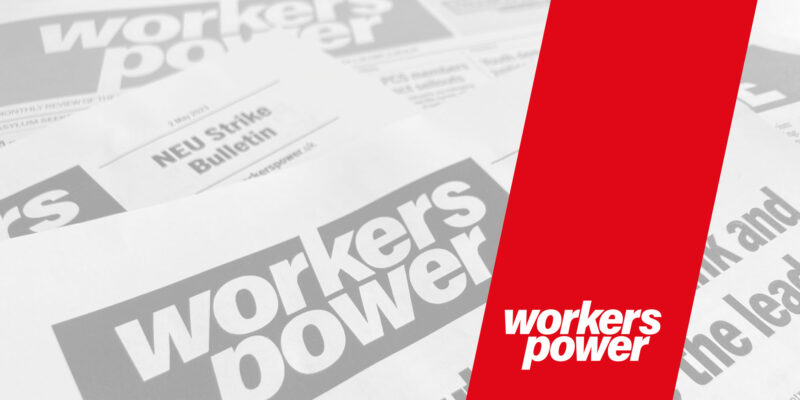No sunshine for Eurozone as crisis returns
 The Eurozone crisis is the main immediate threat to world economic stability and could spark another worldwide recession. Now the 6 May elections have added a new political dimension, with the victory of the Socialist Party’s Francois Hollande in France and his calls for a new growth pact. Andy Yorke explains why this is no springtime for Europe and the euro.
The Eurozone crisis is the main immediate threat to world economic stability and could spark another worldwide recession. Now the 6 May elections have added a new political dimension, with the victory of the Socialist Party’s Francois Hollande in France and his calls for a new growth pact. Andy Yorke explains why this is no springtime for Europe and the euro.
At the start of March, Eurozone bosses breathed a sigh of relief, as the crisis seemed to have been halted after a near-miss banking meltdown in late 2011. At the heart of the reprieve was the European Central Bank (ECB), pumping more than €1 trillion of cheap loans into the banking system and a second bailout agreed for Greece, after a deal cut with its private creditors – the biggest debt restructuring (or government default) in history with a €174 billion write-down. Then 25 EU countries signed an historic fiscal treaty on 2 March, legally binding them to budget limits to be policed by EU bureaucrats, with only Britain and the Czech Republic staying outside. All this good news saw stock markets in Europe and the US soar, with many stock indexes hitting their highest level since last July.
But this proved to be a false spring for the beleaguered Eurozone economies. March may have entered like a lamb but it exited like a lion – or in the language of the markets, entered like a sickly bull but exited like a bear.
Double-dip recession
Late March saw a steady stream of overwhelmingly negative economic indicators and bad news that worsened in April. Manufacturing data and jobs figures have nose-dived since the second half of 2011, leaving 10.9 per cent unemployment totalling 17.4 million across the Eurozone. Early May figures showed an even steeper fall in Purchasing Managers’ Index (PMI) measures for both manufacturing and service sector activity, suggesting accelerating contraction for a third successive quarter in the Eurozone, effectively a recession.
Sharply rising production costs due to rising fuel prices, and falling consumer purchases due to unemployment and austerity are also hitting production hard. A backdrop of slowing growth in Brazil, India and China, key to German exports, along with continued question marks over the US economy have not helped either. Ireland and Britain showed contracting growth again at the end of March, joining Belgium, the Netherlands, Italy, Portugal and Greece in recession, and Spain followed suit at the end of April. The French economy has almost certainly joined them, with only Germany keeping its head barely above water so far.
All in all a series of mutually reinforcing trends are driving the Eurozone back towards recession. Austerity hits growth, low growth drives governments to borrow more, rising debt creates investor panic, hiking interest rates and slashing credit ratings. The result is accelerating debt and renewed demands for austerity to appease the bond markets.
The rain in Spain
Spain has rapidly become the weakest link in the Eurozone. Despite a lower debt-to-GDP ratio than many EU countries, recession and rising bond prices have seen its debt grow quickly, jumping nearly 25 per cent in one year to a predicted 79.8 per cent of GDP by the end of 2012. Spain was at the centre of a huge property bubble that burst with the global recession of 2008. Spanish banks, staggering under a mountain of toxic property loans, took the biggest slice of ECB loans, jumping in March to a record 227.6 billion euros or 63 per cent of the Eurozone total net borrowing from the bank. These loans have gone not only to the deficit-spending Spanish government but to help rollover their bad real estate loans.
When the ECB lending figures came out in mid-April, showing the Spanish banks and government leaning on Draghi’s cheap credit, fears about deficits turned into panic. The Spanish banks are propping up the Spanish government and vice versa. What if one proves insolvent? It will bring down the other, leaving the ECB on the hook for hundreds of billions of euros. Coupled with the drip-feed of bad news, it sparked a stampede to the exits. Throughout April, Spanish bond yields rose sharply back to the levels at the height of the late 2011 crisis, to over 6 per cent by the end of the month, while Italian bond yields followed close behind. Seven per cent is seen as the point of no return where debt and interest rates take off in a vicious spiral. Shares slid on international exchanges while the euro fell against the dollar. Lyn Graham-Taylor, a Rabobank strategist, said: “We’re back in full crisis mode. It is looking more and more likely that Spain is going to have some form of a bailout.” Italy is not doing much better, despite both governments implementing vicious austerity packages.
The net results of April’s string of bad news were Eurozone debt rising to 87.2 per cent of GDP, the highest level since the euro’s launch in 1999, and global stock markets (measured by the MSCI world equity index) falling 1.4 per cent, after rising the rest of the year.
Political shocks
The Russian revolutionary Lenin famously said, “Politics is concentrated economics”. On 23 April proved this to be true as a new, political dimension to austerity came to the fore. The Dutch Prime Minister resigned after his coalition partners failed to agree a hard enough austerity package, and the narrow victory of Francois Hollande the Socialist Party candidate in the French presidential first round elections the day further spooked the markets.
In his victory speech, Hollande announced “Europe is watching us, austerity can no longer be the only option” and says France will not ratify the new EU fiscal treaty unless it is renegotiated to include a “growth pact”. However, he has also signalled compromise with Merkel and Draghi’s austerity supplemented by eurobonds that would not pool (“mutualise”) Germany’s debts and credit rating with the crisis-hit periphery – something German capitalists will not countenance since it would threaten to drag Germany down with the poorer countries – but ECB bonds developed specifically for infrastructure and industrial investment. Germany already compromised over the Draghi long-term refinancing operation (LTRO) stimulus in December. No doubt there is room for convergence between Hollande and Merkel.
This austerity-lite would mean continued cuts and neoliberal “reforms” to public services, pensions and workers’ legal rights. This is effectively Keynesian spending that at best might act to stabilise unemployment at its current high levels.
Who will pay?
With the ECB’s trillion euro stimulus wearing off so quickly and the re-emergence of the Eurozone recession, the question of bailouts returns. More and more analysts are predicting that Ireland, Spain and even Greece again will require fresh bailouts this year. The “realistic” solution to such a crisis is to muddle through with compromises along two lines: the ECB monetising debt – something already begun with Draghi’s boosted LTRO programme – and then controlled defaults into the new bailout fund operational in July, the €500 billion European Stability Mechanism (ESM). The problem is: if the government or banking system in Spain or Italy goes bust, the ECB is now on the hook for hundreds of billions in worthless loans and assets. And how many trillions of euros more can the ECB print without unleashing a disastrous inflation? Meanwhile Italy is the Eurozone’s third largest economy, and Spain its fourth, twice the size of Portugal, Greece and Ireland combined. Bailing out those smaller countries caused tremendous strains and crises, a bailout of Spain would in current circumstances bankrupt and rip apart the Eurozone. This is where Francois Hollande comes in, to force more concessions out of the German government, both to stave off such an explosive crisis for as long as possible, to minimise its impact when it comes, and to produce big enough resources to contain it.
What is for certain is that the longer the crisis goes on, the more the global bankers and bond market funds like Pimco will line up behind the only workable strategy that means their loans get paid: super-austerity and extreme neoliberalism. This necessarily entails attacks on democracy and workers’ rights, and support for the most reactionary governments able to repress resistance.
The “markets” (the term the big capitalist barons and finance houses hide behind) have applied unyielding pressure for this solution throughout the crisis, and while France and Germany, behind the ECB and EU, could wring write-downs out of Greece’s creditors, they are not strong enough to do so repeatedly. Capital would haemorrhage out of Europe. In reality Hollande and his supporters in the Eurozone hierarchy will not stand against the markets in the final analysis.
A barbaric future of poverty for Europe’s workers is the only “sustainable” way for capitalism to go forward. The alternative to this is not Hollande’s austerity-lite but building massive resistance across borders to austerity and in defence of our welfare states, led by a new revolutionary international aiming to go beyond the best rotten “unity” Eurozone capitalists can achieve with a Socialist United States of Europe.









